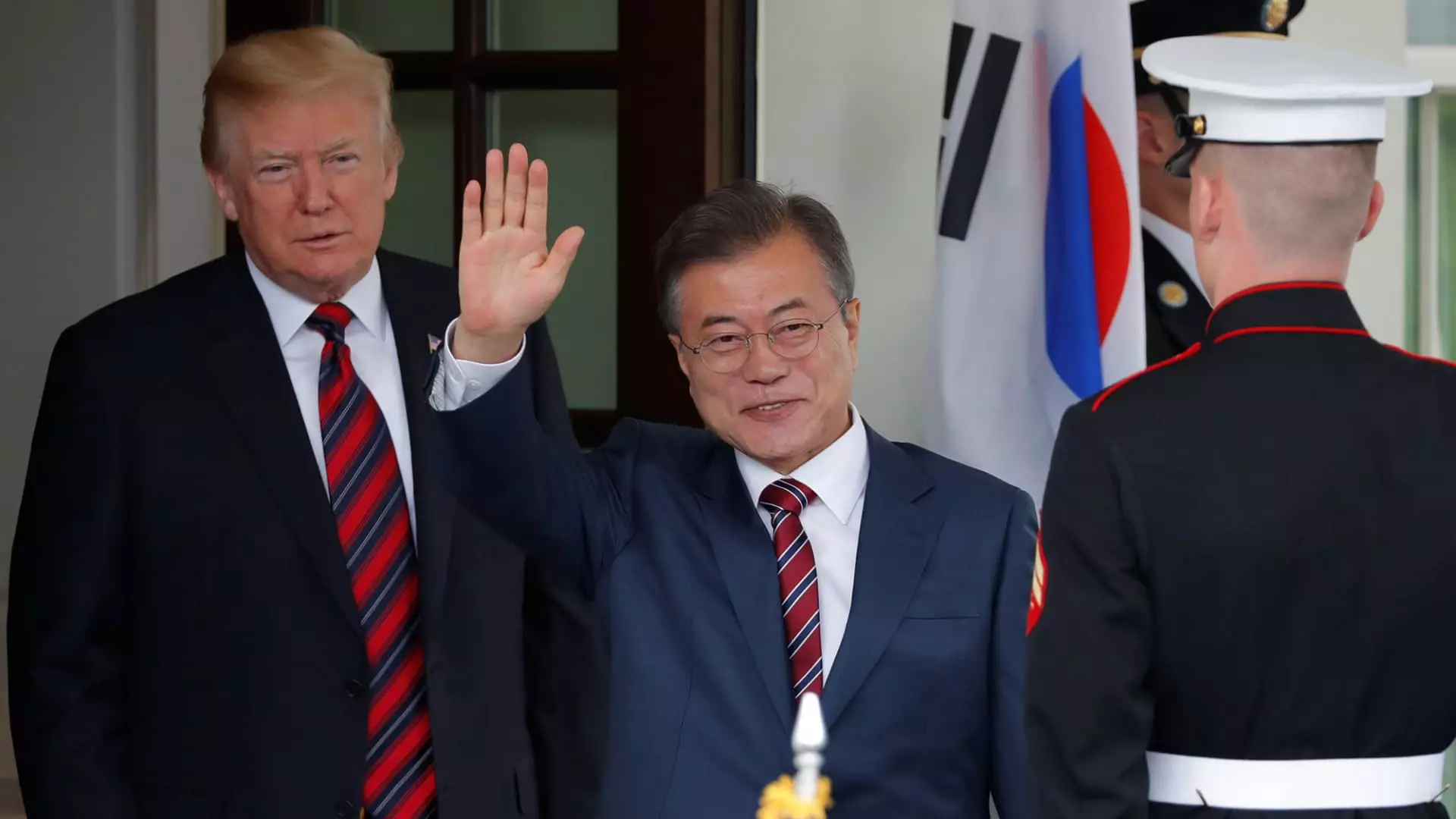The auto industry is once again placed on the precipice of significant changes in trade policy, particularly as President Donald Trump considers increasing tariffs on foreign vehicles. This article delves into how these potential levies, primarily aimed at South Korea and Japan, could reshape the landscape for automobile imports in the United States. With changes in tariffs potentially affecting major players, such as General Motors (GM) and Hyundai Motor, the implications for American consumers and the broader industry warrant careful examination.
Data from GlobalData reveals that in the previous year, South Korea and Japan combined accounted for a substantial 16.8% of all vehicles sold in the U.S. market, showcasing their influence. South Korea emerged remarkably, producing a record 8.6% of American auto sales, edging past Japan’s 8.2%. This shift signifies a growing reliance on East Asian manufacturers in the U.S. automotive market, particularly as both countries have enjoyed relatively favorable tariff conditions, unlike Canada and Mexico, which are facing potential 25% tariffs.
Automakers such as Hyundai and GM greatly benefit from this arrangement, importing vehicles into the U.S. without tariffs from South Korea. Last year, Hyundai surpassed Japan and Canada to become the second-largest exporter of vehicles to the U.S. market, only surpassed by Mexico. The evolving dynamics position South Korea as a pivotal player for U.S. automakers, especially when they look to maintain their competitive edge.
The current tariff scenario stipulates that imports from Japan are subjected to a modest 2.5% tariff, impacting notable automakers like Toyota, Nissan, and Honda. With just over 1.31 million cars sold in the U.S. last year, Japan’s market share has seen a slight decline as South Korean exports have surged. For instance, South Korea’s exports to the U.S. represented more than 1.37 million vehicles in 2024, a stark contrast to 845,000 in 2019. Such growth suggests an evolving competitive landscape that U.S. manufacturers must navigate carefully.
Further adding to complexities, the trade agreement renegotiated by Trump in 2018 aimed to facilitate vehicle imports to South Korea. However, it has not significantly benefited U.S. automotive exports, with data indicating a 16% decrease in passenger vehicle exports to South Korea. These tariff structures have far-reaching consequences, particularly in how they affect consumer behavior and demand for vehicles in the U.S. market.
The potential implementation of additional tariffs has significant ramifications for consumers, as experts are concerned that automakers will simply pass on the increased costs to buyers, ultimately leading to higher vehicle prices. With South Korea’s Hyundai being the largest exporter of vehicles to the U.S. and GM increasing its imports from the country, these firms face considerable risks under revised tariff circumstances. In 2019, GM imported roughly 173,000 South Korean-produced vehicles, increasing to over 407,000 last year.
GM’s investment in South Korean manufacturing adds another layer of complexity, with the automaker continually looking to enhance profitability through its product offerings. Vehicles like the Buick Encore GX and Chevrolet Trax illustrate GM’s strategy to capitalize on the demand for entry-level models. Nevertheless, any tariff changes could jeopardize these efforts, influencing sales and market positioning amid rising competition.
Trade specialist Terence Lau emphasizes the automotive industry’s resilience in the face of trade barriers. He argues that while the industry can adapt to tariffs, substantial changes require time and strategic adjustment. Lau notes that lower tariffs may be manageable, but those exceeding 10% present serious challenges that can undermine profit margins.
Ford’s CEO Jim Farley has echoed similar sentiments, advocating for a comprehensive approach to tariffs that encompasses all countries, rather than selective imposition targeting specific nations. By calling for an equitable strategy, he highlights the risks of selectively taxing imports, which can distort competition and hinder American manufacturers’ ability to thrive domestically.
As discussions surrounding tariffs intensify, the fate of the automotive industry hangs in the balance. The immediate future remains uncertain, with President Trump likely to announce tariff strategies impacting various countries, leaving automakers and consumers alike anxious about the evolving landscape. With South Korea and Japan at the forefront of this potential upheaval, the automotive industry must prepare to navigate the implications of these trade policies while striving to maintain its position in a globally competitive market. As companies like GM and Hyundai navigate these challenges, the stakes are high—both for their profitability and the affordability of vehicles for American consumers.

